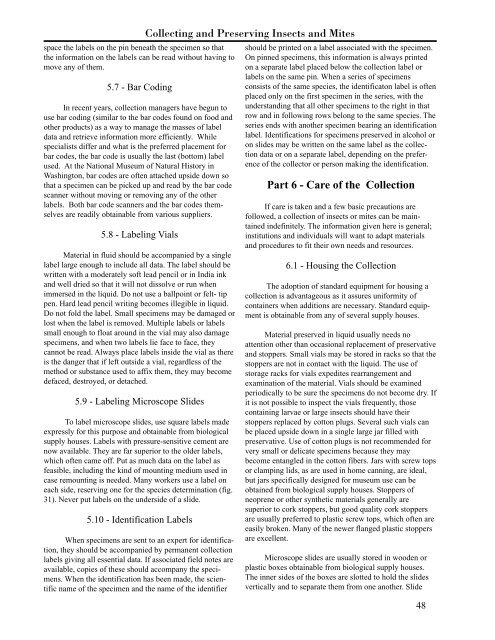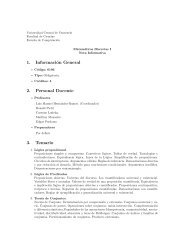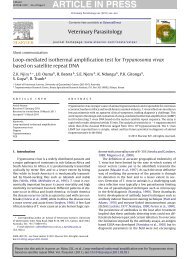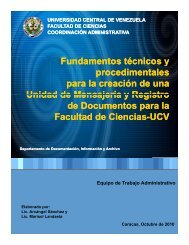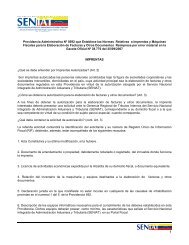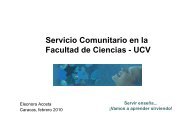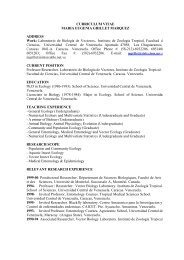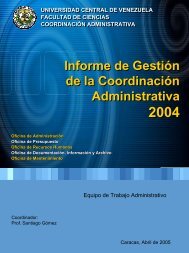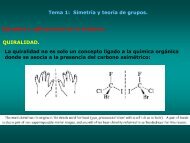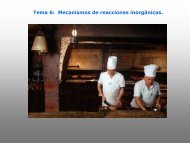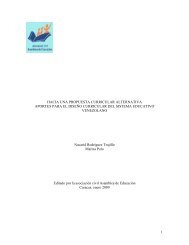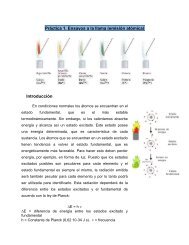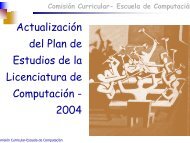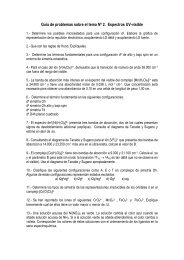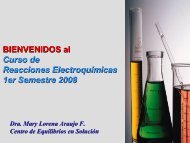Collecting and Preserving
Collecting and Preserving
Collecting and Preserving
- No tags were found...
Create successful ePaper yourself
Turn your PDF publications into a flip-book with our unique Google optimized e-Paper software.
space the labels on the pin beneath the specimen so thatthe information on the labels can be read without having tomove any of them.5.7 - Bar CodingIn recent years, collection managers have begun touse bar coding (similar to the bar codes found on food <strong>and</strong>other products) as a way to manage the masses of labeldata <strong>and</strong> retrieve information more efficiently. Whilespecialists differ <strong>and</strong> what is the preferred placement forbar codes, the bar code is usually the last (bottom) labelused. At the National Museum of Natural History inWashington, bar codes are often attached upside down sothat a specimen can be picked up <strong>and</strong> read by the bar codescanner without moving or removing any of the otherlabels. Both bar code scanners <strong>and</strong> the bar codes themselvesare readily obtainable from various suppliers.5.8 - Labeling VialsMaterial in fluid should be accompanied by a singlelabel large enough to include all data. The label should bewritten with a moderately soft lead pencil or in India ink<strong>and</strong> well dried so that it will not dissolve or run whenimmersed in the liquid. Do not use a ballpoint or felt- tippen. Hard lead pencil writing becomes illegible in liquid.Do not fold the label. Small specimens may be damaged orlost when the label is removed. Multiple labels or labelssmall enough to float around in the vial may also damagespecimens, <strong>and</strong> when two labels lie face to face, theycannot be read. Always place labels inside the vial as thereis the danger that if left outside a vial, regardless of themethod or substance used to affix them, they may becomedefaced, destroyed, or detached.5.9 - Labeling Microscope SlidesTo label microscope slides, use square labels madeexpressly for this purpose <strong>and</strong> obtainable from biologicalsupply houses. Labels with pressure-sensitive cement arenow available. They are far superior to the older labels,which often came off. Put as much data on the label asfeasible, including the kind of mounting medium used incase remounting is needed. Many workers use a label oneach side, reserving one for the species determination (fig.31). Never put labels on the underside of a slide.5.10 - Identification LabelsWhen specimens are sent to an expert for identification,they should be accompanied by permanent collectionlabels giving all essential data. If associated field notes areavailable, copies of these should accompany the specimens.When the identification has been made, the scientificname of the specimen <strong>and</strong> the name of the identifier<strong>Collecting</strong> <strong>and</strong> <strong>Preserving</strong> Insects <strong>and</strong> Mitesshould be printed on a label associated with the specimen.On pinned specimens, this information is always printedon a separate label placed below the collection label orlabels on the same pin. When a series of specimensconsists of the same species, the identificaton label is oftenplaced only on the first specimen in the series, with theunderst<strong>and</strong>ing that all other specimens to the right in thatrow <strong>and</strong> in following rows belong to the same species. Theseries ends with another specimen bearing an identificationlabel. Identifications for specimens preserved in alcohol oron slides may be written on the same label as the collectiondata or on a separate label, depending on the preferenceof the collector or person making the identification.Part 6 - Care of the CollectionIf care is taken <strong>and</strong> a few basic precautions arefollowed, a collection of insects or mites can be maintainedindefinitely. The information given here is general;institutions <strong>and</strong> individuals will want to adapt materials<strong>and</strong> procedures to fit their own needs <strong>and</strong> resources.6.1 - Housing the CollectionThe adoption of st<strong>and</strong>ard equipment for housing acollection is advantageous as it assures uniformity ofcontainers when additions are necessary. St<strong>and</strong>ard equipmentis obtainable from any of several supply houses.Material preserved in liquid usually needs noattention other than occasional replacement of preservative<strong>and</strong> stoppers. Small vials may be stored in racks so that thestoppers are not in contact with the liquid. The use ofstorage racks for vials expedites rearrangement <strong>and</strong>examination of the material. Vials should be examinedperiodically to be sure the specimens do not become dry. Ifit is not possible to inspect the vials frequently, thosecontaining larvae or large insects should have theirstoppers replaced by cotton plugs. Several such vials canbe placed upside down in a single large jar filled withpreservative. Use of cotton plugs is not recommended forvery small or delicate specimens because they maybecome entangled in the cotton fibers. Jars with screw topsor clamping lids, as are used in home canning, are ideal,but jars specifically designed for museum use can beobtained from biological supply houses. Stoppers ofneoprene or other synthetic materials generally aresuperior to cork stoppers, but good quality cork stoppersare usually preferred to plastic screw tops, which often areeasily broken. Many of the newer flanged plastic stoppersare excellent.Microscope slides are usually stored in wooden orplastic boxes obtainable from biological supply houses.The inner sides of the boxes are slotted to hold the slidesvertically <strong>and</strong> to separate them from one another. Slide48


